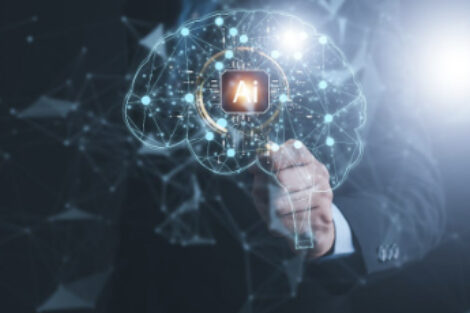Artificial intelligence has advanced more rapidly than many critics predicted, transforming from narrow rule-based systems into powerful engines of reasoning, language, perception, and generation, yet despite these gains it continues to face deep challenges in generality, sustainability, and emotional or moral understanding; as the higher education sector adapts, collaboration between humans and AI will be essential to orienting these capabilities toward meaningful inquiry, responsible innovation, and transformative learning.
In the early decades of computing, AI was constrained to symbolic logic systems and expert systems, where rules had to be explicitly coded and where reasoning was brittle; over time this paradigm gave way to statistical methods, machine learning, and eventually deep learning, neural networks and generative models, enabling systems to infer patterns, generalise across domains, and respond in natural language in ways once thought impossible. Contemporary large language models such as GPT-4 and successor architectures now routinely handle multi-step reasoning, creative generation, code writing, translation, and multimodal tasks, demonstrating performance on benchmarks that exceed earlier expectations. For instance, the integration of “chain-of-thought” prompting has increased reasoning accuracy substantially on targeted mathematical or logic problems, with models like GPT-3 improving accuracy on grade-school math benchmarks (GSM8K) from around 15 per cent to nearly 47 per cent when guided with intermediate reasoning steps. The more recent OpenAI “o1” model has been specifically designed to “think before answering,” allocating extra computational effort to reasoning chains and reportedly outperforming prior models in scientific and mathematical queries. The shift toward “reasoning” models, including recent releases like Anthropic’s Claude 3.7 (hybrid reasoning) and Google’s Gemini Flash Thinking (which can explicitly display internal reasoning steps), testifies to the importance of interpretability, control over reasoning depth, and transparency.
These leaps past earlier limits, whether of idiomatic language, context retention across longer documents, multimodal understanding, or even aspects of creativity, demonstrate that many predictions of AI’s limitations were premature. AI now generates art, music, original prose, code, and even designs. AlphaGo’s victory over a world champion Go player in 2016, DeepMind’s AlphaFold predicting protein folding with high accuracy, and the demonstrable gains in natural language understanding all underscore that progress has repeatedly outstripped conservative forecasts. Yet despite this progress, AI remains far from solving the challenge of artificial general intelligence (AGI): no current system combines robust, flexible reasoning across all domains, self-reflection, common-sense understanding, or human-level general cognitive adaptability.
One persistent limitation is AI hallucination, models confidently asserting false statements. As systems become more powerful, hallucinations become harder to detect and more dangerous in high-stakes settings. Another is the absence of genuine emotional intelligence, subjective awareness, or truly human-like common sense, which requires deep grounding in sensory, social, and embodied experience. Many systems simulate understanding of emotions or moods, but cannot internalise values or empathic insight. The challenge of encoding judgment and ethics is particularly acute: human moral reasoning is contextually fluid, often contradictory, and shaped by culture and lived experience, making it difficult to formalise in algorithmic rules or loss functions. Common sense reasoning has long been a barrier: tasks such as disambiguating pronouns in Winograd schemas were once thought to demand human nuance, and while transformer models have attained over 90 per cent accuracy on certain Winograd schema datasets, critics argue that pattern matching rather than genuine understanding remains at play. In embodied tasks, robots encounter the challenge of perception, real-time control, and interaction in complex physical environments, tasks that remain orders of magnitude more difficult than isolated reasoning. This disparity reflects Moravec’s paradox: abilities that seem easy for humans, sensory perception, walking, and manipulating objects, are extraordinarily difficult for machines, while tasks that seem hard (like high-level reasoning) have proven more tractable computationally.
Energy consumption and sustainability represent a second frontier of challenge. Large AI models require massive computation during training and inference, and the growth in model size and compute has been exponential: some analyses show that compute used for training top models has doubled every two months since 2020, imposing what some call an “energy wall.” Double-exponential increases in inference energy have been observed: in evaluations of over a thousand ImageNet classification models, the marginal gains in accuracy often come at steep costs in energy use. The data centre electricity consumption for AI is growing rapidly: in 2024, data centres (excluding cryptocurrency mining) consumed about 415 terawatt-hours (TWh), and AI may already account for 20 percent of that load; some projections suggest that by the end of 2025 AI could absorb nearly half of data centre power consumption, amounting to an estimated 23 gigawatts, roughly twice the electricity usage of the Netherlands, if growth continues unchecked. These trends raise serious sustainability concerns, including carbon emissions, cooling demands, hardware waste, supply chain impacts for minerals, and resource inequality. In response, the emerging field of “Green AI” or “sustainable AI” emphasises model optimisation, algorithmic efficiency, hardware innovation (e.g. TPUs, FPGAs), energy-aware architectures, pruning, quantisation, knowledge distillation, and data-centric approaches. One empirical study found that by modifying datasets alone, energy consumption in training could drop by up to 92 per cent with negligible loss in performance. Frameworks have been proposed to balance performance with ecological footprint, guiding design toward energy-efficient models that align with global sustainability goals.
Beyond sustainability lies the deeper question of how AI might approach self-awareness, consciousness, or purpose. Some theorists argue that self-awareness remains a philosophical mystery, not just a technical one; programming introspective models that truly understand their own goals, biases, limitations, or consciousness crosses into uncharted territory. Moreover, alignment, ensuring AI systems share human values and do not produce harmful outcomes, is a core unresolved issue: the alignment problem becomes more acute as systems grow in autonomy and reach, as human moral systems are inconsistent, context-sensitive, culturally varied, and sometimes contradictory. Any general intelligence must embed judgment, value systems, and dynamic moral calibration, a feat far beyond current capabilities. The architecture of AGI may require modular, heterogeneous architectures rather than monolithic universal designs; some research suggests that incorporating multiple subsystems (reasoning, perception, world modelling, ethics, planning) in a coordinated architecture might be more effective than pushing a single “universal model,” addressing the grand challenges of energy, alignment, and architectural design in tandem.
In the higher education context, these developments carry immediate significance. AI tools already assist in literature review, data analysis, simulation, automated feedback, tutoring, translation, academic writing support, and adaptive learning. But their responsible integration demands careful alignment with pedagogical goals, academic integrity, researcher oversight, and institutional ethics. The most promising direction is hybrid human–AI collaboration, where AI acts as an augmenting partner rather than an autonomous agent. Humans define purpose, frame the questions, set objectives, check assumptions, and provide values, while AI contributes speed, pattern synthesis, generative variation, multimodal support, large-scale data processing, and reasoning suggestions. This division of labour leverages the strengths of both: humans bring context, domain insight, moral judgment, goal orientation, and creativity, while AI brings computational scale, consistency, and exploration of alternative pathways. As AI matures, universities may deploy AI collaborators in research teams, co-teaching, curriculum design, administrative analytics, and cross-disciplinary innovation. But successful deployment requires robust governance, transparency, accountability, explainability, bias auditing, privacy safeguards, and continuous human oversight.
The path forward demands sustained investment in foundational research, interdisciplinary partnerships (bridging computer science, ethics, cognitive science, philosophy, energy systems, and domain specialists), and institutional capacity to govern AI responsibly. AI’s trajectory will likely surprise us: just as past predictions of AI’s limits were proven wrong, future breakthroughs, perhaps in neuromorphic architectures, causal reasoning, meta-learning, embodied agents, or integrated brain-inspired systems, may open new frontiers. Yet the central truth remains: the promise of AI must be tethered to human values, purpose, and collaboration. In the domain of higher education, the goal is not to replace human intellect but to amplify inquiry, deepen insight, and open new pathways to address the complex global challenges of our time, and that goal can only be realised if humans and AI define, guide, and steward their partnership together.



